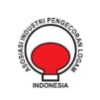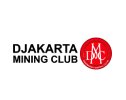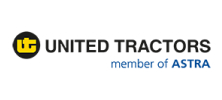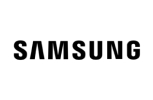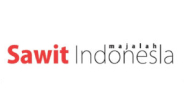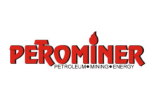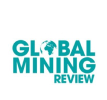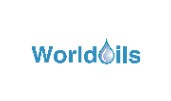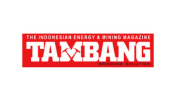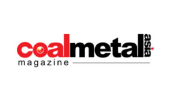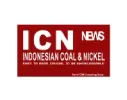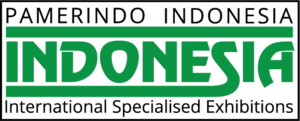
The FINANCIAL — The last 10 years have seen the rollercoaster of highs and lows in the mining sector continue. Commodity prices reached both historic highs and lows, and operational realities shifted irrevocably in the face of a digital revolution. 2018 will likely see the continuation of rapid change in the industry.
Released on January 31, Deloitte Touche Tohmatsu Limited (Deloitte Global)’s 10th annual mining report, Tracking the trends, explores key trends facing mining companies as they continue the transition to the digital mine of the future and anticipate future disruptors.
“To thrive in the mining industry’s historical boom and bust cycle, and capitalize on new opportunities, companies must rethink the traditional mining model,” said Philip Hopwood, Deloitte Global Mining leader. “Profound change takes time. To change for the better and pave new paths for the future, the mining industry must focus on driving ongoing investments in innovation and digitization, inspiring their approach to the workforce of the future, manifesting in their commitment to strengthen government and community relations, and guiding their efforts to repair their public image.”
Commodities of the future – Predicting tomorrow’s disruptors
For mining companies, turning disruption into opportunity requires a long-term view capable of assessing how emerging market trends may affect the demand for specific commodities.
“Looking back just 20 years, it would have been hard to believe that nickel, lithium, cobalt, and graphite would be an affordable way to power batteries. But, today that is the reality and a potential growth opportunity, particularly with the emergence of electric vehicles,” said Hopwood. “And although asteroid mining for rare metals still sounds like science fiction today, the market potential in the not-too-distant future could be astronomical. If mining companies want to get ahead of the trends, they need to delve deeply into emerging market disruptors”
Additional trends identified in the report include:
Bringing digital to life: Date—and the ability to organize, manage, and process it—is rapidly becoming a competitive differentiator. Mining companies must embed digital thinking into the heart of business strategy and practices to transform the way corporate decisions are made. To succeed in this effort, miners need a clear vision of how the future digital mine might transform core mining processes, the flow of information, and supporting back office processes.
Overcoming innovation barriers: Mining executives understand that innovation is necessary for the industry to transform. This isn’t confined to just technological innovation; it includes the adoption of more innovative approaches to engaging with stakeholders, re-envisioning the future of work, and identifying the commodities that will be in greatest demand going forward. Yet, the need to demonstrate near-term returns combined with a traditionally risk-averse culture that does not foster collaboration are hindering efforts to innovate within the industry.
The future of work: As the digital mine becomes a reality, the nature of work is poised to change dramatically—at both the mine site and in the back office. While the adoption of digital solutions, such as robotic process automation, autonomous equipment, and artificial intelligence will augment performance in the mining industry, it also has potential to cause upheaval. Rather than eliminating jobs though, it will likely translate into concerted efforts to retrain people to use technology and redesign jobs.
Shifting perceptions: Despite the significant contribution of the mining sector to the world’s economy, the industry’s reputation remains somewhat tarnished in many countries due to perceptions that mining companies contribute to environmental damage, cause negative community impacts, and engage in dubious practices abroad. To rebuild trust with employees, investors, communities, governments, and the public, many leading mining companies are embarking on efforts, such as taking decisive public stances around corporate social responsibility, adhering to voluntary sustainability standards, and passing shareholder resolutions regarding increased disclosure on climate change.
Transforming stakeholder relationships: To expand local employment opportunities, increase tax revenues, and meet community demands for improved infrastructure and greater environmental protection, many governments of resource-rich countries continue to put pressure on the mining industry. Rather than approaching relationships with communities and governments as a cost of compliance, companies must determine how to make a concrete social impact that adapts to the benefit of different stakeholder groups.
Water – finding sustainable solutions to a pressing issue: As the UN estimates that water scarcity impacts about 40 percent of the global population, mining companies must enhance their approach to water management through innovative methods designed to reduce, reuse and recycle water in water-scare regions, and to contain and treat wastewater to prevent spillage or contamination of downstream water flows.
Changing shareholder expectations: Shifting corporate direction to meet shareholder demand for short-term returns can work to the long-term detriment of mining companies. Instead performance measures should reflect varied objectives to create value for multiple constituencies—including customers, employees, suppliers, and communities—not just shareholders. This would free up boards to focus more on long-term strategies, succession planning, and leadership development, while linking executive compensation to broader corporate goals—including those related to good corporate citizenship and ethical behavior
Reserve replacement woes: As supply constraints plague the industry, mining companies will need to find a more agile way of replacing reserves—one that allows them to engage in exploration and development without sinking in large amounts of capital for long periods of time.
Realigning mining boards to drive transformation: Boards mired in old ways of thinking will increasingly struggle to fulfill new mandates, such as taking a more active role in challenging the executive team on topics from corporate strategy to digital disruption, talent management, and emerging risk factors. Diverse perspectives are necessary if mining boards are to effectively challenge organizational assumptions, assess the validity of new ways of thinking, and help determine if the organization is taking on too much risk—or perhaps not enough.
source: http://www.finchannel.com/business/71192-deloitte-global-mining-report-explores-key-trends-in-2018







